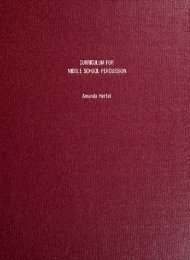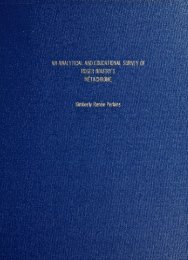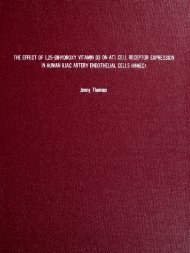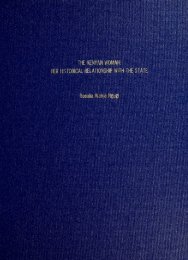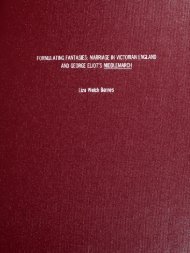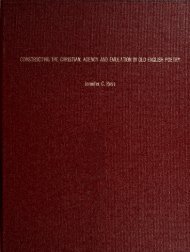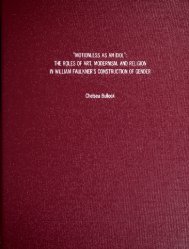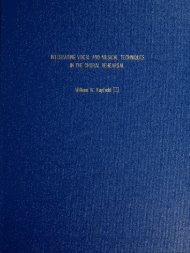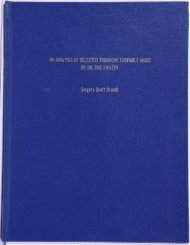An Analytical and Educational Survey of Howard Hanson's Dies ...
An Analytical and Educational Survey of Howard Hanson's Dies ...
An Analytical and Educational Survey of Howard Hanson's Dies ...
- No tags were found...
Create successful ePaper yourself
Turn your PDF publications into a flip-book with our unique Google optimized e-Paper software.
25Five Variations: Melodic ElementsVariation I.Each <strong>of</strong> the five variations in <strong>Dies</strong> Natalis are based <strong>of</strong>f <strong>of</strong> melodicfragments from the first phrase <strong>of</strong> the chorale. The first variation uses the first six notes<strong>of</strong> the chorale in G-sharp minor instead <strong>of</strong> the original G major; this is an unexpectedchromatic shift to minor. Horns 1<strong>and</strong> 2 have the first direct quote from the chorale inminor in measures 61 through 62:Jr f ifjjjgEx. 3: Horns 1 & 2, measures 61-62The melody consequently follows in Trumpets 1<strong>and</strong> 2, <strong>and</strong> then is carried t<strong>of</strong>lutes, oboes, English horn, <strong>and</strong> cornets 1<strong>and</strong> 2, evolving harmonically as a part <strong>of</strong> theprogression throughout the ensemble. However, the core melodic elements are the same:over each chord, the melodic structure is 5-3-1-5-6-5 (see example below).s4mf::p#Ex. 4: Flute, measure 63The trumpet solo in the second measure <strong>of</strong> Variation I in measure 60 <strong>and</strong> thehorns in measure 69 have a slight variation on the chorale melody. Both trumpet <strong>and</strong>horns start on the third instead <strong>of</strong> arpeggiating the root triad, giving length <strong>and</strong> emphasisto the new root for the G-sharp minor key center at measure 60 <strong>and</strong> the B-minor keycenter at measure 69.



